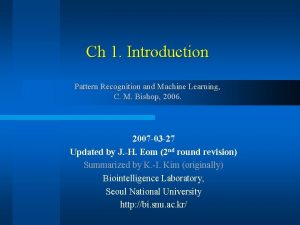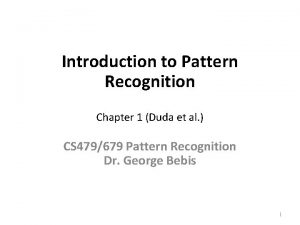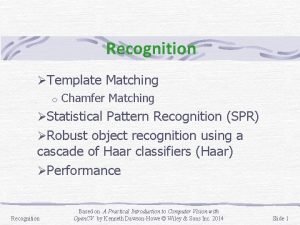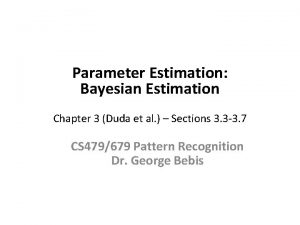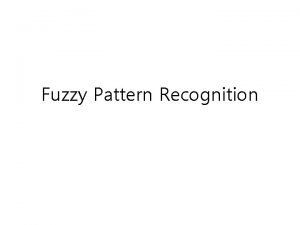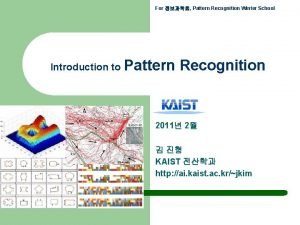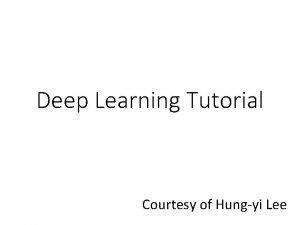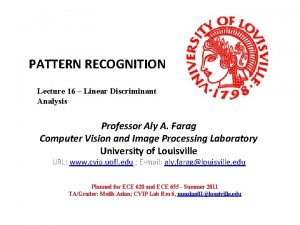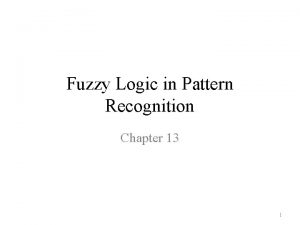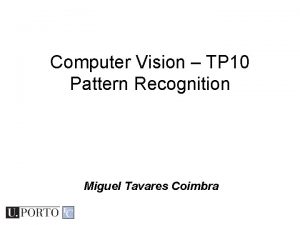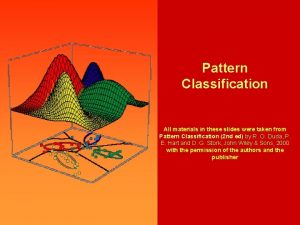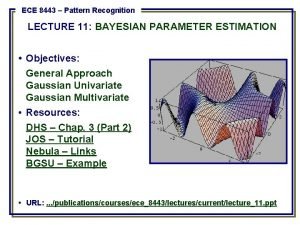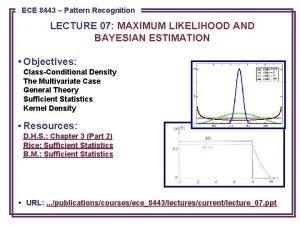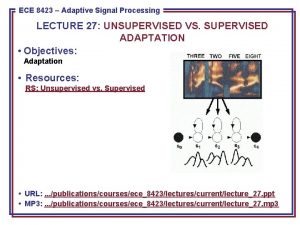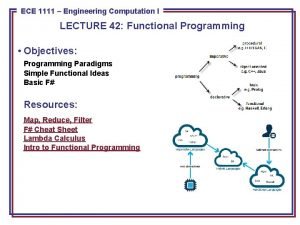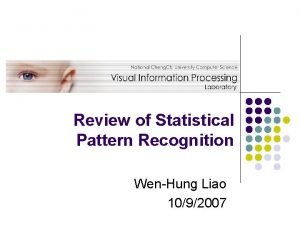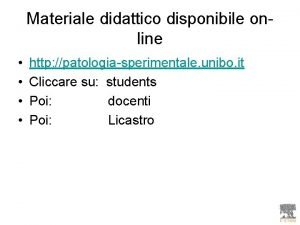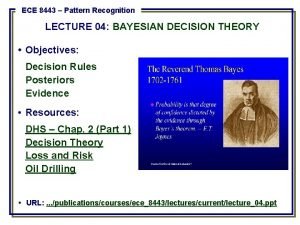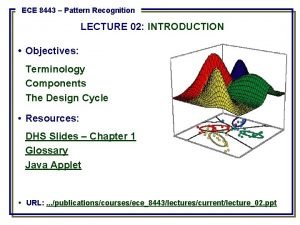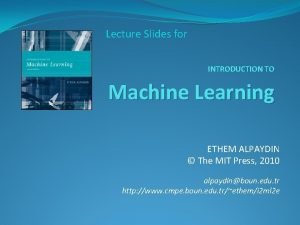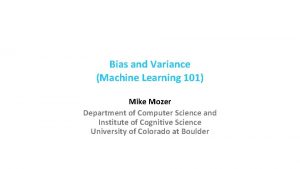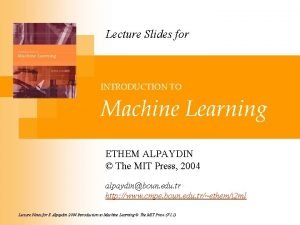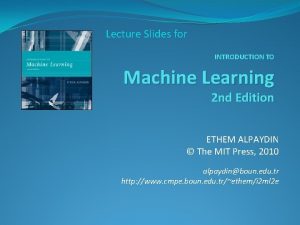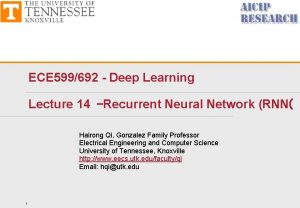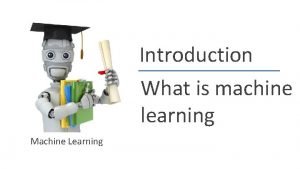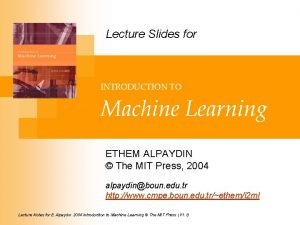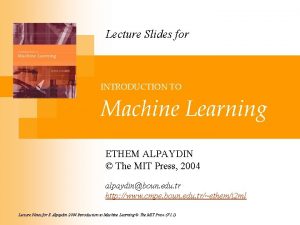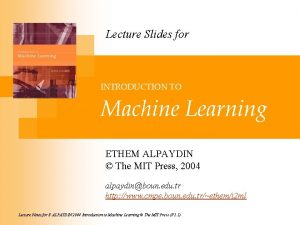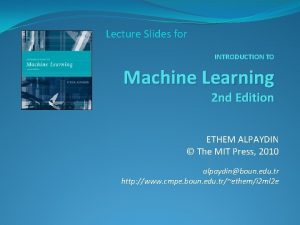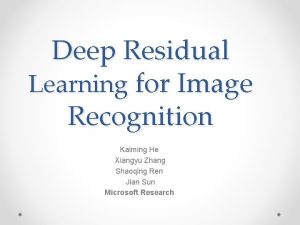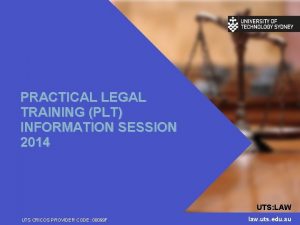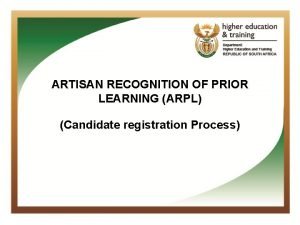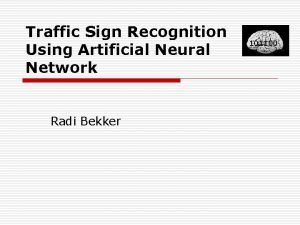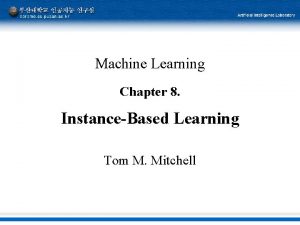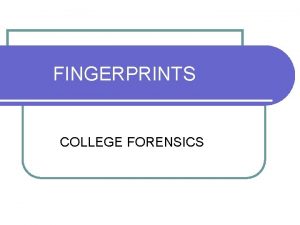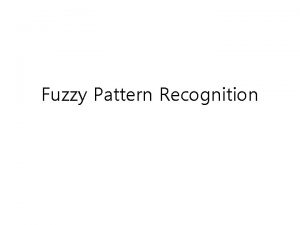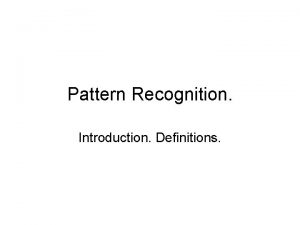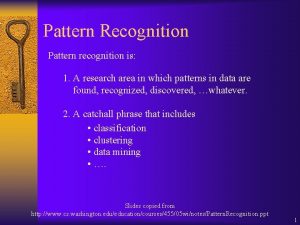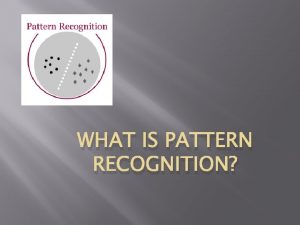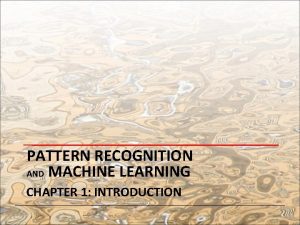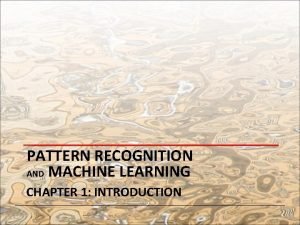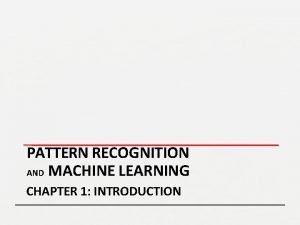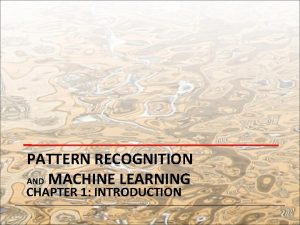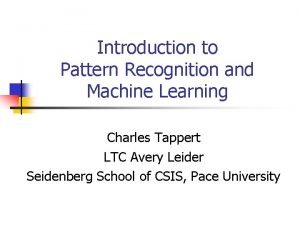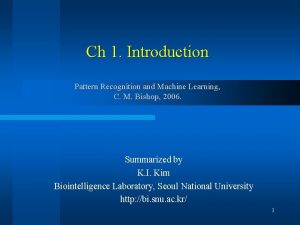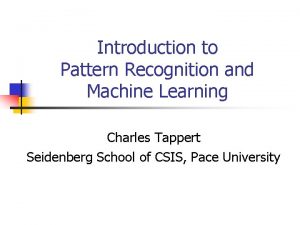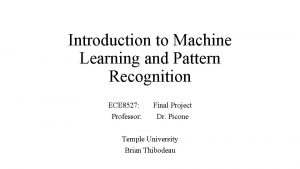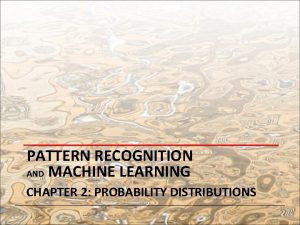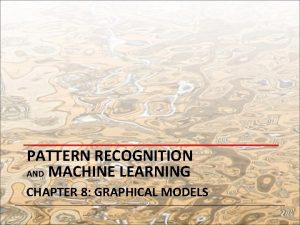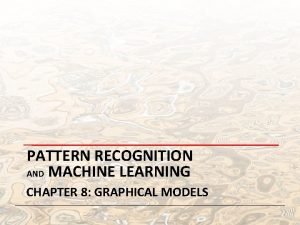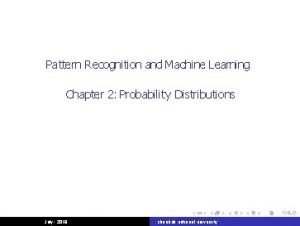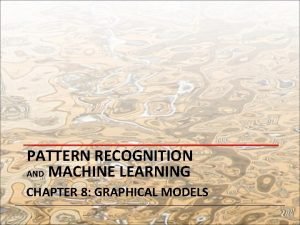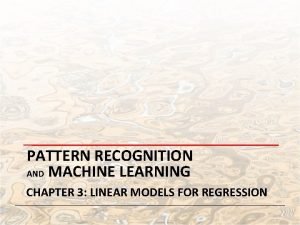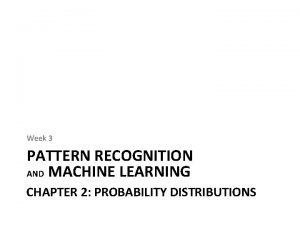PATTERN RECOGNITION AND MACHINE LEARNING CHAPTER 1 INTRODUCTION




























































- Slides: 60

PATTERN RECOGNITION AND MACHINE LEARNING CHAPTER 1: INTRODUCTION

Example Handwritten Digit Recognition

Polynomial Curve Fitting

Sum-of-Squares Error Function

0 th Order Polynomial

1 st Order Polynomial

3 rd Order Polynomial

9 th Order Polynomial

Over-fitting Root-Mean-Square (RMS) Error:

Polynomial Coefficients

Data Set Size: 9 th Order Polynomial

Data Set Size: 9 th Order Polynomial

Regularization Penalize large coefficient values

Regularization:

Regularization:

Regularization: vs.

Polynomial Coefficients

Probability Theory Apples and Oranges

Probability Theory Marginal Probability Joint Probability Conditional Probability

Probability Theory Sum Rule Product Rule

The Rules of Probability Sum Rule Product Rule

Bayes’ Theorem posterior likelihood × prior

Probability Densities

Transformed Densities

Expectations Conditional Expectation (discrete) Approximate Expectation (discrete and continuous)

Variances and Covariances

The Gaussian Distribution

Gaussian Mean and Variance

The Multivariate Gaussian

Gaussian Parameter Estimation Likelihood function

Maximum (Log) Likelihood

Properties of and

Curve Fitting Re-visited

Maximum Likelihood Determine by minimizing sum-of-squares error, .

Predictive Distribution

MAP: A Step towards Bayes Determine by minimizing regularized sum-of-squares error, .

Bayesian Curve Fitting

Bayesian Predictive Distribution

Model Selection Cross-Validation

Curse of Dimensionality

Curse of Dimensionality Polynomial curve fitting, M = 3 Gaussian Densities in higher dimensions

Decision Theory Inference step Determine either or . Decision step For given x, determine optimal t.

Minimum Misclassification Rate

Minimum Expected Loss Example: classify medical images as ‘cancer’ or ‘normal’ Truth Decision

Minimum Expected Loss Regions are chosen to minimize

Reject Option

Why Separate Inference and Decision? • • Minimizing risk (loss matrix may change over time) Reject option Unbalanced class priors Combining models

Decision Theory for Regression Inference step Determine . Decision step For given x, make optimal prediction, y(x), for t. Loss function:

The Squared Loss Function

Generative vs Discriminative Generative approach: Model Use Bayes’ theorem Discriminative approach: Model directly

Entropy Important quantity in • coding theory • statistical physics • machine learning

Entropy • Entropy = average amount of information needed to specify the state of a random variable. • Noiseless Coding Theorem (Shannon, 1948): the entropy is a lower bound on the # of bits needed to transmit the state of a random variable.

Entropy Coding theory: x discrete with 8 possible states; how many bits to transmit the state of x? All states equally likely

Entropy

Entropy In how many ways can N identical objects be allocated M bins? Macrostate Weight: Entropy maximized when Stirling’s approximation: ln(N!) ~= N ln(N) – N Macrostate:

Entropy

Differential Entropy Put bins of width ¢ along the real line Differential entropy maximized (for fixed in which case Note: Differential Entropy can go negative ) when

Conditional Entropy

The Kullback-Leibler Divergence

Mutual Information
 Cm bishop pattern recognition and machine learning
Cm bishop pattern recognition and machine learning Pattern recognition duda
Pattern recognition duda Inductive and analytical learning in machine learning
Inductive and analytical learning in machine learning Inductive and analytical learning
Inductive and analytical learning Eager learning
Eager learning Azure data mining
Azure data mining Template matching pattern recognition
Template matching pattern recognition Bayesian parameter estimation in pattern recognition
Bayesian parameter estimation in pattern recognition Pattern recognition
Pattern recognition Design cycle of pattern recognition
Design cycle of pattern recognition Pattern recognition
Pattern recognition Pattern recognition lab
Pattern recognition lab Pattern recognition clinical reasoning
Pattern recognition clinical reasoning Contoh pattern recognition
Contoh pattern recognition Discriminant function in pattern recognition
Discriminant function in pattern recognition Fuzzy logic in pattern recognition
Fuzzy logic in pattern recognition Pattern recognition
Pattern recognition Flickr
Flickr Direct and indirect wax pattern
Direct and indirect wax pattern Contoh template matching
Contoh template matching Pattern recognition slides
Pattern recognition slides Pattern recognition
Pattern recognition Pattern recognition
Pattern recognition Bayesian parameter estimation in pattern recognition
Bayesian parameter estimation in pattern recognition Pattern recognition
Pattern recognition Pattern recognition
Pattern recognition Pattern recognition
Pattern recognition Statistical pattern recognition a review
Statistical pattern recognition a review Pattern recognition unibo
Pattern recognition unibo Bayesian decision theory in pattern recognition
Bayesian decision theory in pattern recognition Objectives of pattern recognition
Objectives of pattern recognition Concept learning task in machine learning
Concept learning task in machine learning Analytical learning in machine learning
Analytical learning in machine learning Pac learning model in machine learning
Pac learning model in machine learning Machine learning t mitchell
Machine learning t mitchell Instance based learning in machine learning
Instance based learning in machine learning Inductive learning machine learning
Inductive learning machine learning First order rule learning in machine learning
First order rule learning in machine learning Deep learning vs machine learning
Deep learning vs machine learning Ethem alpaydin
Ethem alpaydin Andrew ng introduction to machine learning
Andrew ng introduction to machine learning Introduction to machine learning andrew ng
Introduction to machine learning andrew ng High bias low variance introduction to machine learning
High bias low variance introduction to machine learning Machine learning ethem
Machine learning ethem Andrew ng machine learning slides
Andrew ng machine learning slides Introduction to machine learning slides
Introduction to machine learning slides Lstm lecture
Lstm lecture Introduction to machine learning andrew ng
Introduction to machine learning andrew ng Ethem alpaydin
Ethem alpaydin Introduction to machine learning ethem alpaydin
Introduction to machine learning ethem alpaydin Machine learning ethem
Machine learning ethem Introduction to machine learning slides
Introduction to machine learning slides He kaiming
He kaiming Deep learning speech recognition
Deep learning speech recognition Plt information session
Plt information session Artisan recognition of prior learning
Artisan recognition of prior learning Traffic sign recognition deep learning
Traffic sign recognition deep learning Cuadro comparativo e-learning b-learning m-learning
Cuadro comparativo e-learning b-learning m-learning Tom mitchell machine learning solutions chapter 3
Tom mitchell machine learning solutions chapter 3 Spiral pattern with 2 deltals and many forms of pattern.
Spiral pattern with 2 deltals and many forms of pattern. Patterns and pattern classes in digital image processing
Patterns and pattern classes in digital image processing
